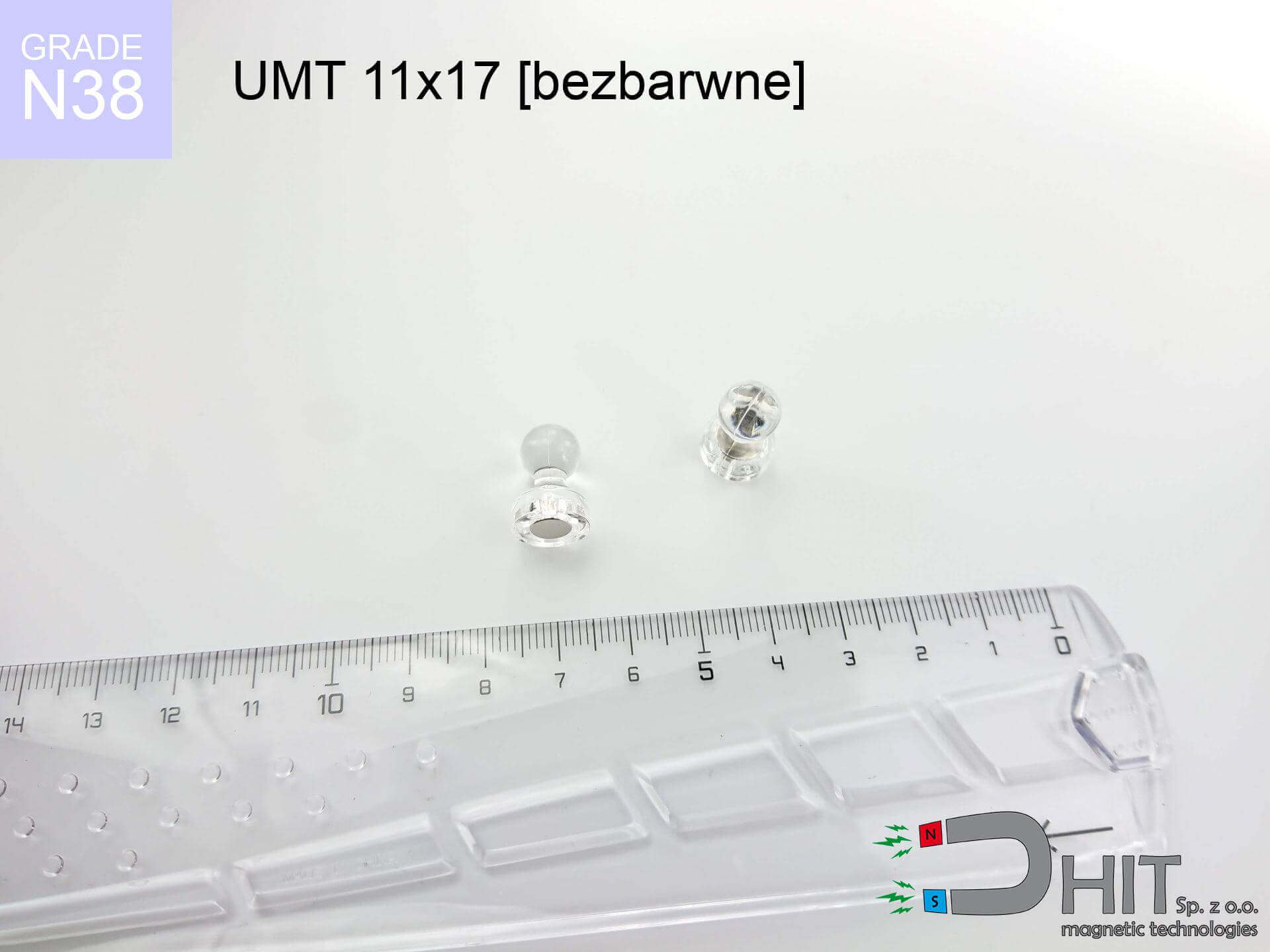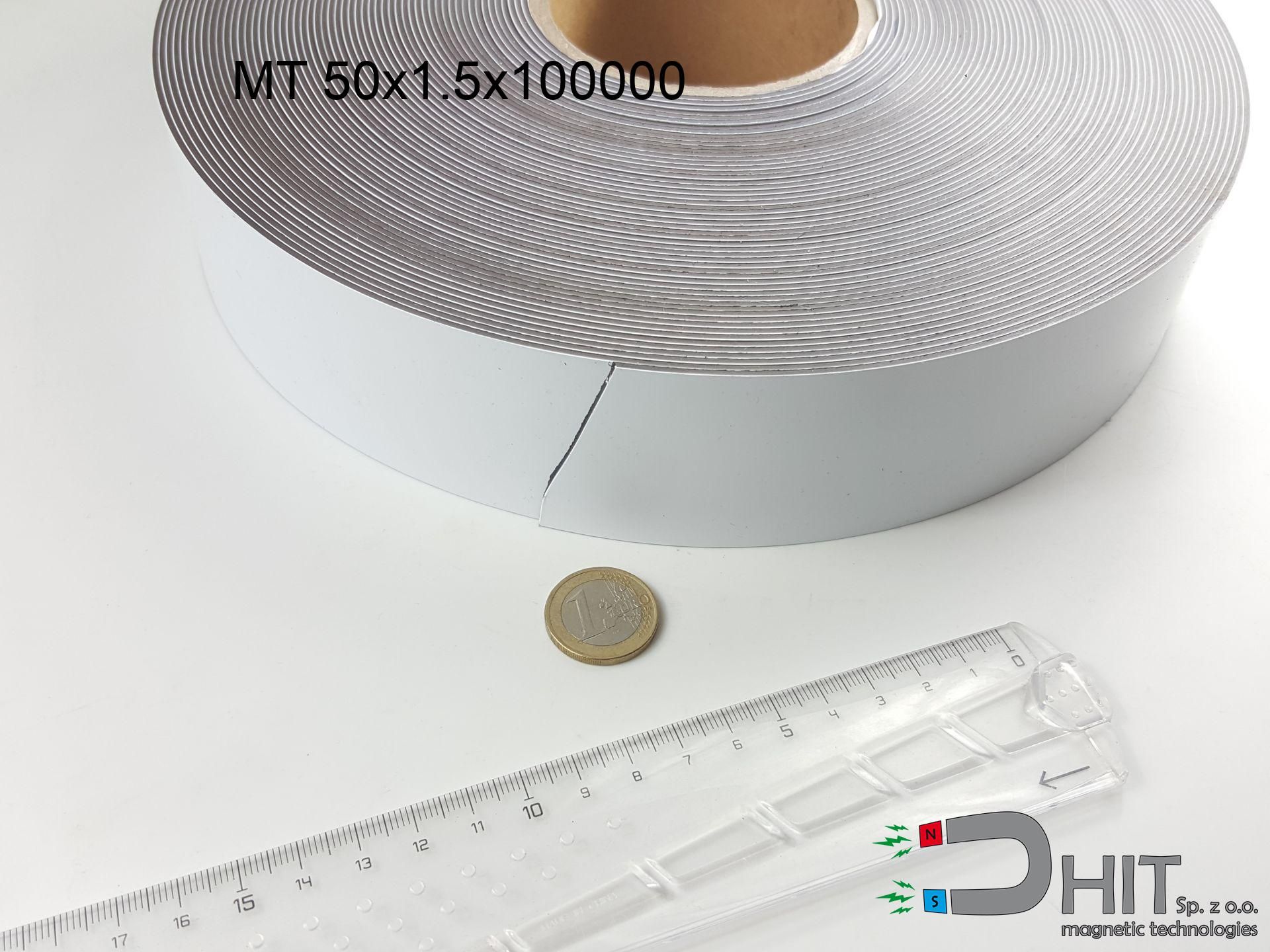UI 45x13x6 [C321] / N38 - badge holder
badge holder
Catalog no 150209
GTIN: 5906301813569
length [±0,1 mm]
45 mm
Width [±0,1 mm]
13 mm
Height [±0,1 mm]
6 mm
Weight
0.15 g
Load capacity
1.75 kg / 17.16 N
2.40 ZŁ with VAT / pcs + price for transport
1.950 ZŁ net + 23% VAT / pcs
bulk discounts:
Need more?Looking for a better price?
Give us a call
+48 888 99 98 98
if you prefer get in touch by means of
request form
the contact section.
Weight and appearance of magnetic components can be analyzed using our
force calculator.
Same-day shipping for orders placed before 14:00.
Magnetic properties of material N38
Physical properties of sintered neodymium magnets Nd2Fe14B at 20°C
Shopping tips
Strengths as well as weaknesses of rare earth magnets.
Besides their remarkable magnetic power, neodymium magnets offer the following advantages:
- They have unchanged lifting capacity, and over around ten years their performance decreases symbolically – ~1% (in testing),
- Magnets very well resist against loss of magnetization caused by external fields,
- The use of an elegant finish of noble metals (nickel, gold, silver) causes the element to have aesthetics,
- They are known for high magnetic induction at the operating surface, making them more effective,
- Thanks to resistance to high temperature, they can operate (depending on the form) even at temperatures up to 230°C and higher...
- Possibility of custom modeling and adjusting to atypical applications,
- Key role in electronics industry – they are used in HDD drives, motor assemblies, advanced medical instruments, as well as modern systems.
- Thanks to efficiency per cm³, small magnets offer high operating force, in miniature format,
Characteristics of disadvantages of neodymium magnets: weaknesses and usage proposals
- At very strong impacts they can break, therefore we advise placing them in special holders. A metal housing provides additional protection against damage and increases the magnet's durability.
- We warn that neodymium magnets can lose their power at high temperatures. To prevent this, we recommend our specialized [AH] magnets, which work effectively even at 230°C.
- When exposed to humidity, magnets usually rust. To use them in conditions outside, it is recommended to use protective magnets, such as those in rubber or plastics, which secure oxidation as well as corrosion.
- We suggest a housing - magnetic mount, due to difficulties in realizing threads inside the magnet and complicated forms.
- Possible danger to health – tiny shards of magnets are risky, in case of ingestion, which becomes key in the context of child safety. It is also worth noting that small elements of these devices are able to complicate diagnosis medical in case of swallowing.
- High unit price – neodymium magnets have a higher price than other types of magnets (e.g. ferrite), which hinders application in large quantities
Detachment force of the magnet in optimal conditions – what it depends on?
The declared magnet strength concerns the maximum value, obtained under ideal test conditions, meaning:
- with the use of a yoke made of low-carbon steel, guaranteeing full magnetic saturation
- whose transverse dimension equals approx. 10 mm
- with a plane cleaned and smooth
- under conditions of ideal adhesion (surface-to-surface)
- during pulling in a direction vertical to the plane
- at room temperature
Determinants of practical lifting force of a magnet
Real force impacted by specific conditions, such as (from most important):
- Distance (betwixt the magnet and the metal), since even a tiny clearance (e.g. 0.5 mm) results in a decrease in lifting capacity by up to 50% (this also applies to paint, rust or debris).
- Direction of force – highest force is reached only during pulling at a 90° angle. The shear force of the magnet along the surface is standardly many times lower (approx. 1/5 of the lifting capacity).
- Wall thickness – thin material does not allow full use of the magnet. Part of the magnetic field passes through the material instead of converting into lifting capacity.
- Steel grade – ideal substrate is pure iron steel. Stainless steels may attract less.
- Base smoothness – the smoother and more polished the surface, the larger the contact zone and higher the lifting capacity. Roughness acts like micro-gaps.
- Thermal environment – temperature increase results in weakening of force. Check the maximum operating temperature for a given model.
* Lifting capacity was assessed using a smooth steel plate of suitable thickness (min. 20 mm), under perpendicular detachment force, however under shearing force the holding force is lower. Moreover, even a minimal clearance {between} the magnet and the plate decreases the holding force.
Safe handling of neodymium magnets
Safe distance
Avoid bringing magnets close to a purse, computer, or TV. The magnetism can destroy these devices and wipe information from cards.
Caution required
Handle with care. Rare earth magnets attract from a long distance and snap with massive power, often quicker than you can move away.
Mechanical processing
Powder produced during grinding of magnets is flammable. Do not drill into magnets unless you are an expert.
Heat warning
Monitor thermal conditions. Exposing the magnet to high heat will destroy its properties and pulling force.
Material brittleness
NdFeB magnets are sintered ceramics, meaning they are very brittle. Collision of two magnets leads to them shattering into shards.
Medical interference
For implant holders: Strong magnetic fields disrupt medical devices. Maintain minimum 30 cm distance or ask another person to handle the magnets.
Product not for children
Only for adults. Tiny parts pose a choking risk, causing severe trauma. Store away from children and animals.
Metal Allergy
A percentage of the population have a sensitization to nickel, which is the standard coating for neodymium magnets. Prolonged contact may cause an allergic reaction. We suggest wear safety gloves.
Pinching danger
Pinching hazard: The attraction force is so immense that it can cause blood blisters, crushing, and even bone fractures. Use thick gloves.
GPS and phone interference
Remember: rare earth magnets generate a field that disrupts precision electronics. Keep a separation from your mobile, tablet, and navigation systems.
Caution!
Looking for details? Read our article: Are neodymium magnets dangerous?

![Magnet for badge UI 45x13x6 [C321] / N38 Magnet for badge UI 45x13x6 [C321] / N38](https://cdn3.dhit.pl/graphics/banners/magnet.webp)
![UI 45x13x6 [C321] / N38 - badge holder](https://cdn3.dhit.pl/graphics/products/ui45x13x6-c321-jic.jpg)

![UI 45x13x5 [M301] / N38 - badge holder UI 45x13x5 [M301] / N38 - badge holder](https://cdn3.dhit.pl/graphics/products/ui45x13x5-m301-vud.jpg)



